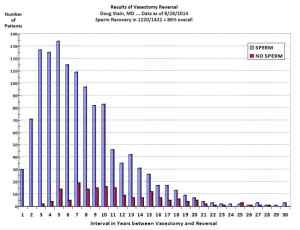Traditionally vasectomies were considered to be permanent procedures, but headways in science and medicine have made reversal attainable for the average person. Vasectomy reversal is a procedure that involves the surgical reattachment of the severed vas deferens, with the end goal of restoring fertility in men that have had a vasectomy in the past. There are many reasons why someone would want a vasectomy reversal. Most couples want more children, often following a remarriage, some couples that at one point did not want children change their minds, and a few have unfortunately lost children and desire more.
Other methods of having children besides vasectomy reversal are available as well. IVF, (in-vitro fertilization), known colloquially as having a “test tube baby”, involves taking one of the female’s eggs and retrieving sperm from the male, and manually combining them outside of the body without sexual intercourse. The embryo is then transferred to the uterus. ICSI (intracytoplasmic sperm injection) is a more recent innovation that involves directly injecting a single sperm into an egg, and is very effective for severely infertile men whose semen lacks enough motile (moving) sperm cells.
The average cost of basic IVF in the US is around $12,500, and medications run another $3,000-$5,000. Pre-implantation genetic diagnosis (PGD) step of the process another $3,000 to $6,000. Altogether, conservatively speaking, The cost of basic IVF is about $20,000 … for each attempt to have a healthy child utilizing a procedure that is successful (most optimistically) about 40% of the time, depending upon factors such as maternal age and the specific medical circumstances of the parents.
Adoption or sperm donation are other options as well, but many naturally desire to raise their own biological children. Sperm donation is the cheaper option, and usually costs $400-$1,000. Adoption is considerably more expensive ($5,000-$40,000) and the process can take years to accomplish. The final, and often least desirable option is a child-free lifestyle.
For couples where the child-rearing partner is reproductively healthy, vasectomy reversal seems to be the most cost effective way of having biological children. One Stop Medical Center offers vasovasostomy at $2,490, considerably cheaper than IVF and adoption while still making biological children of both parents attainable, which cannot be said of sperm donation.








